WOC
Member
- Messages
- 2
- Reaction score
- 0
- Points
- 1
I am selling an exclusive, carefully designed, and technologically advanced, fully ready-to-use CC shop, developed using the latest web technologies. This product combines well-thought-out functionality, CSS3 and JavaScript visual effects, as well as ease of management thanks to built-in WYSIWYG editors.
The project was developed with a focus on quality, security against penetration testers, and performance. Below, I will provide a detailed description of the functional blocks, provide screenshots, and outline the terms for verification and sale.
1. Users
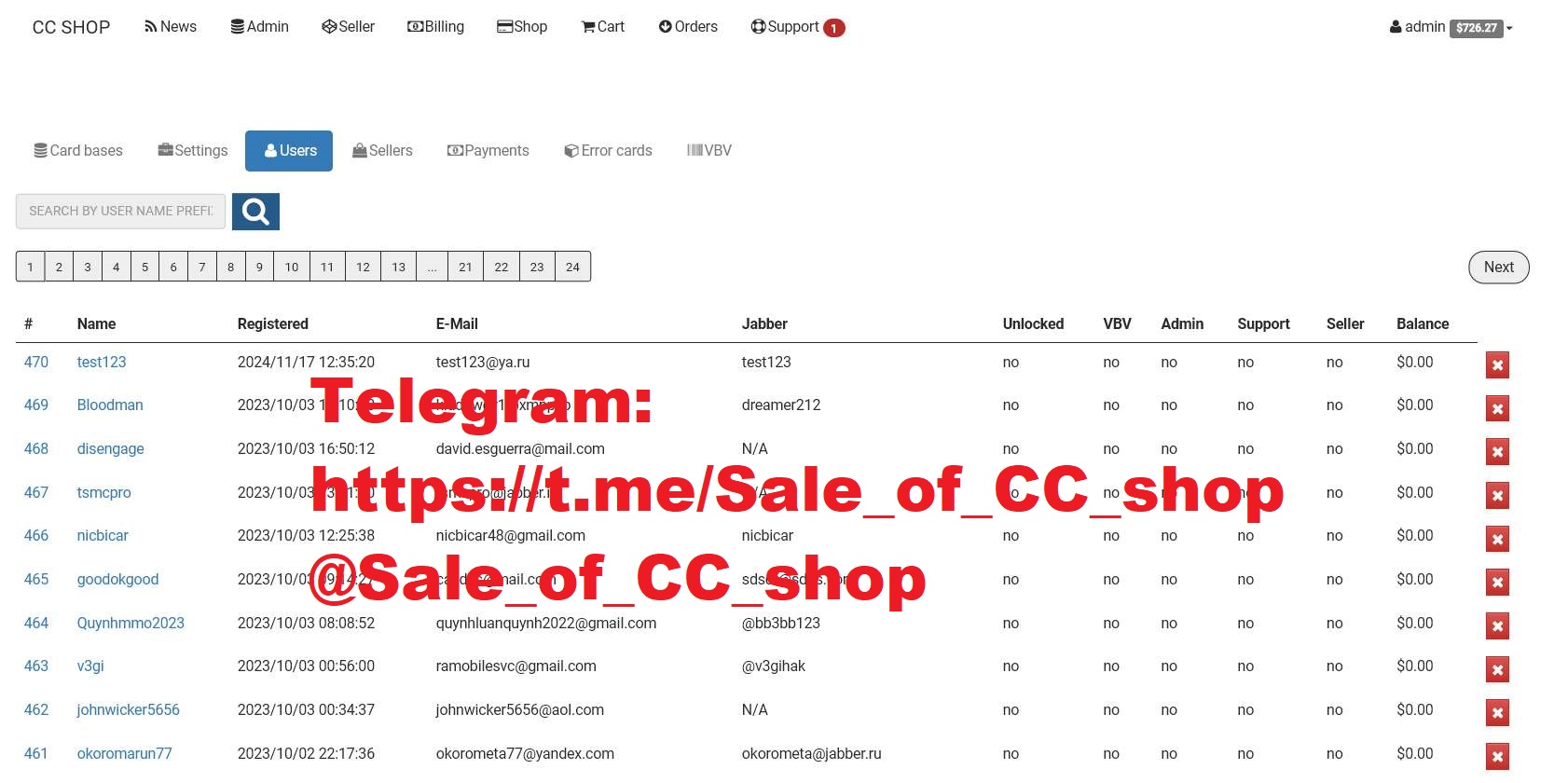
The system supports three levels of user roles with different access rights:
Administrator: Full access to all shop functions, including user management, data uploading, and settings configuration.
Seller: Provides card databases for upload by the administrator and receives a set percentage from the sales of each database. Percentages are customizable. Payouts are controlled by the administrator.
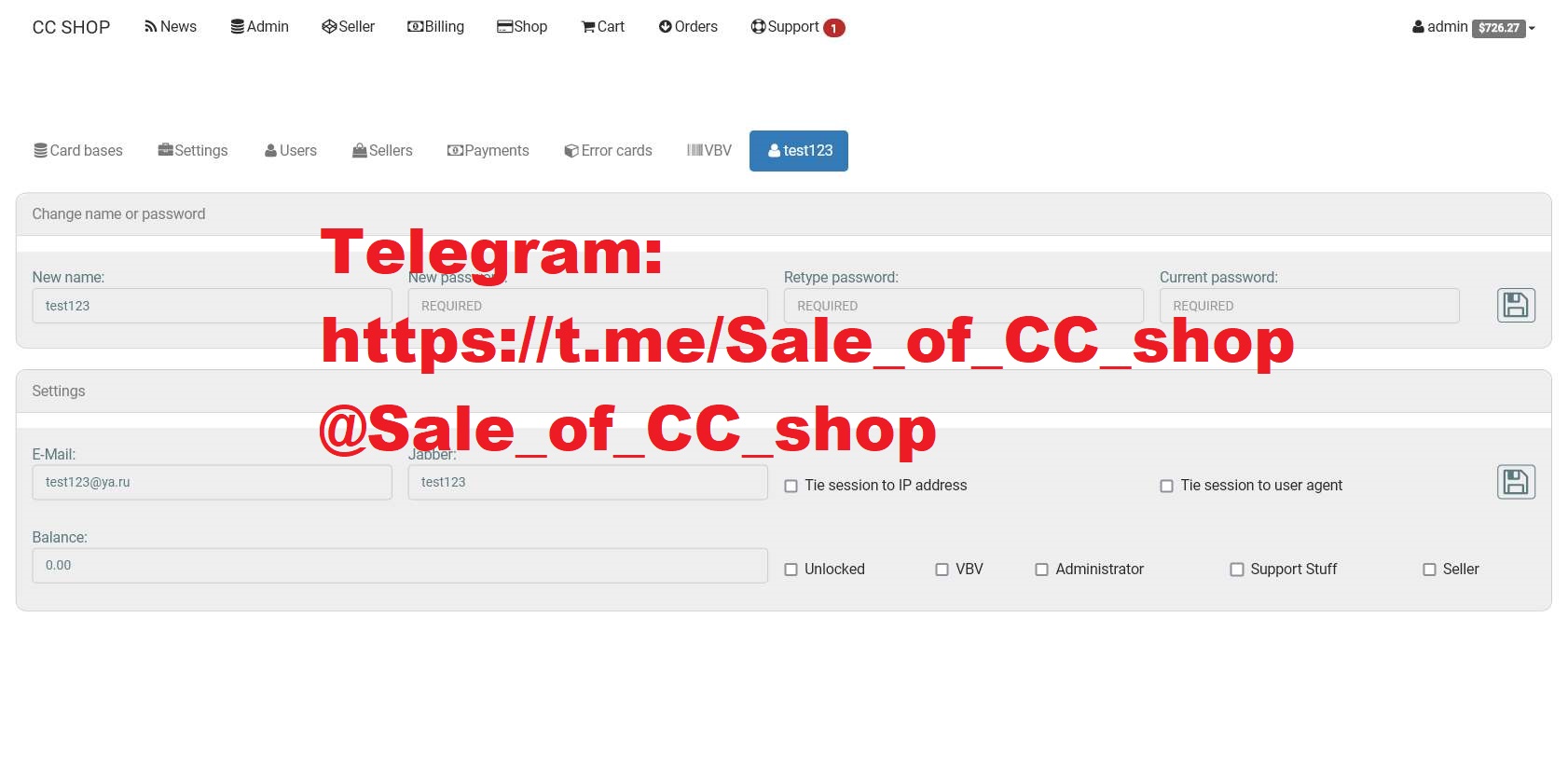
Support Staff: Access to tickets, their editing, and responses to resolve user inquiries.
The functionality allows administrators to manually manage accounts: add new users, modify their data, or delete them if necessary.
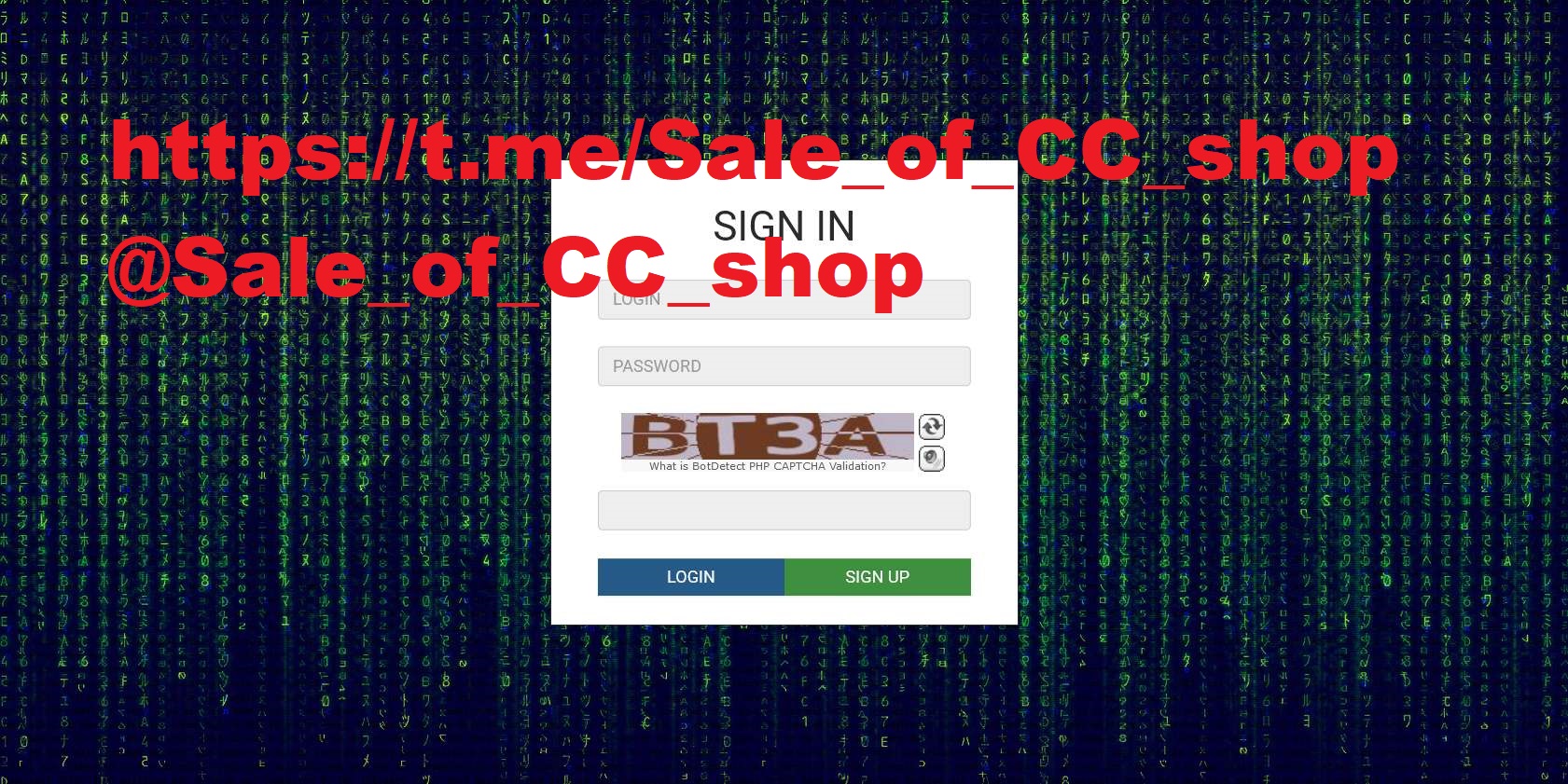
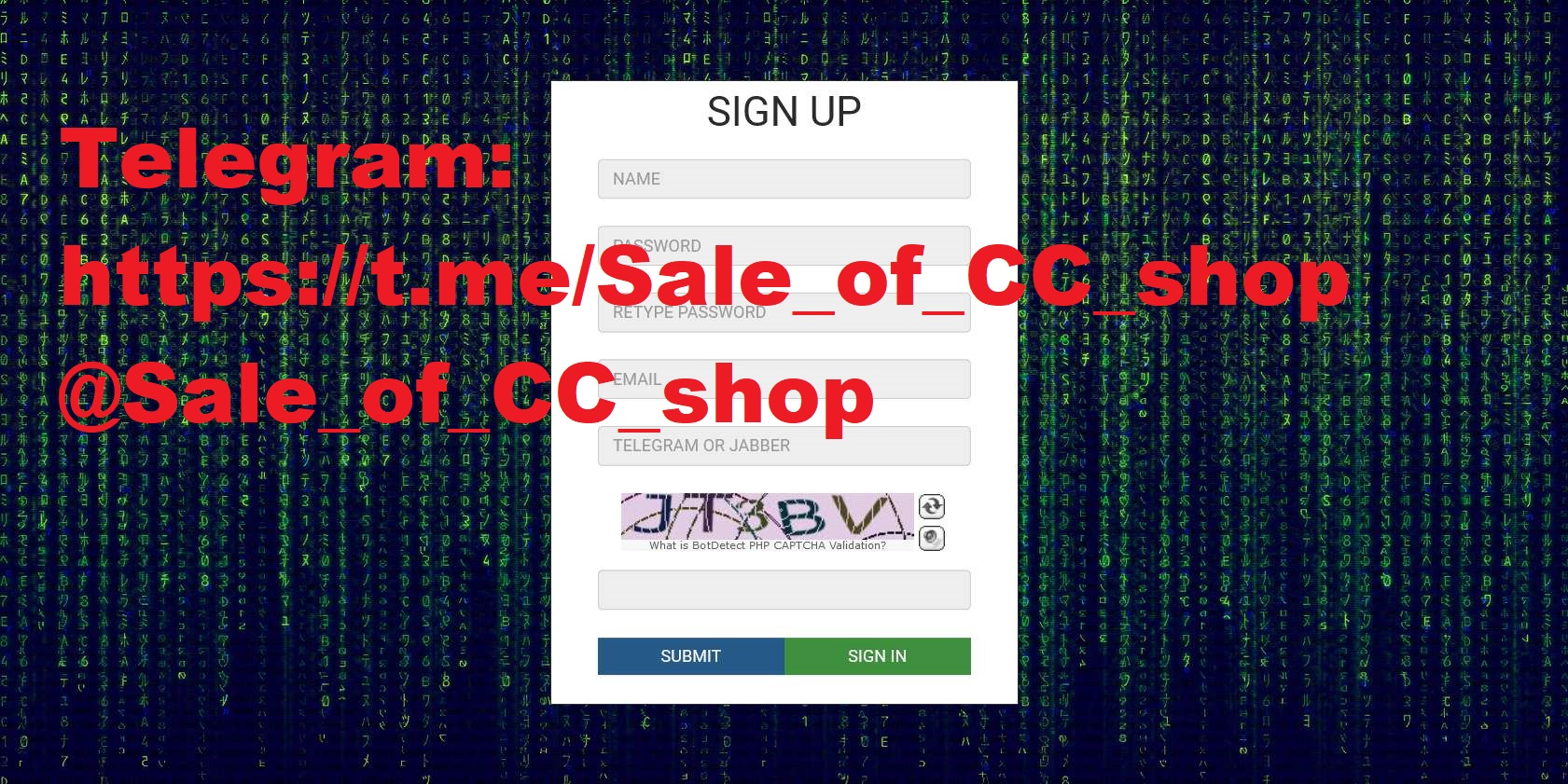
2. News
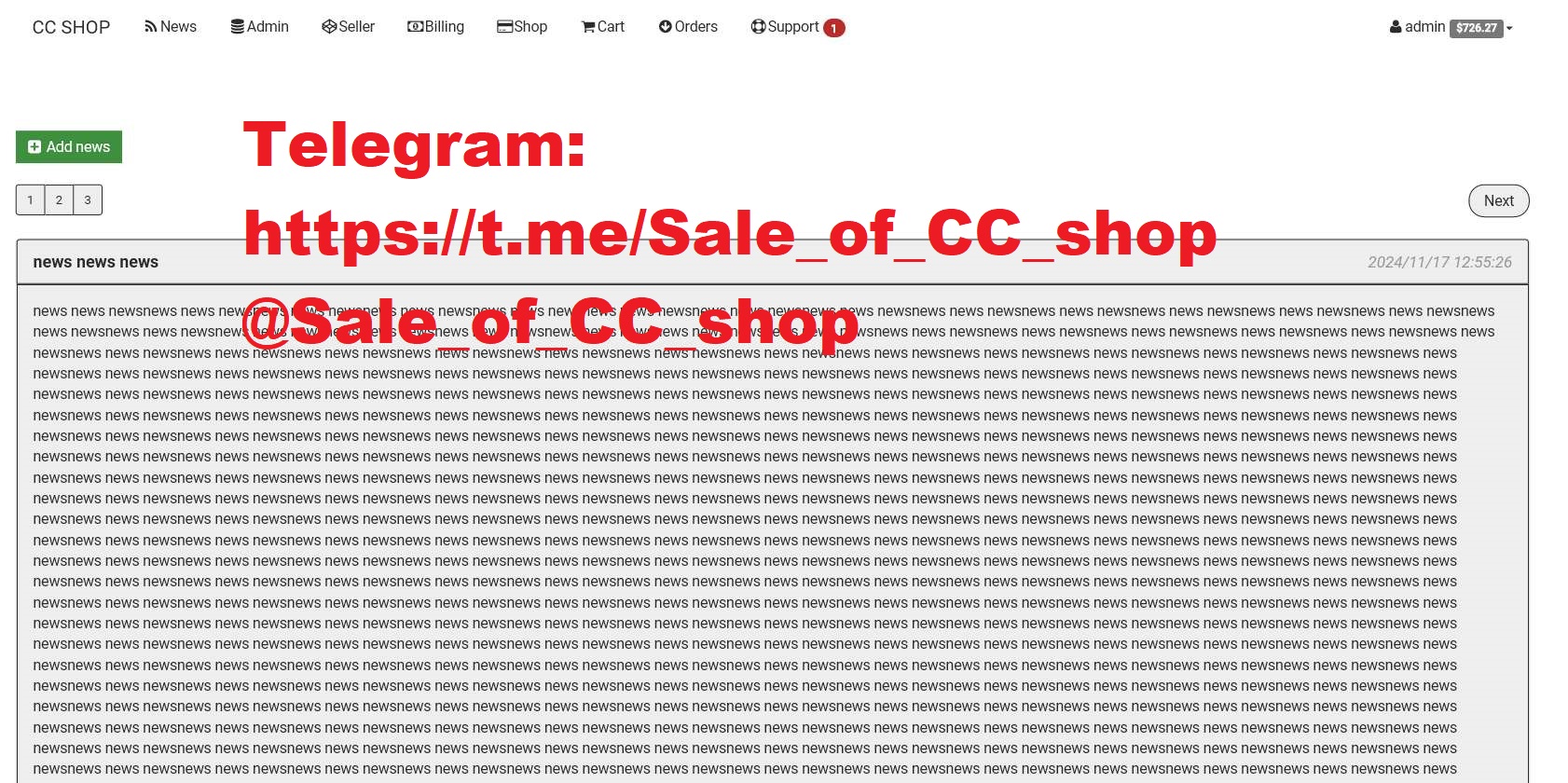
The news section is the central hub for informing users after they log in. Here, the latest updates are displayed with the ability to scroll through previous posts. News can include, for example, messages about uploaded databases or changes to functionality. The administrator can easily edit them inline using a flexible WYSIWYG editor with HTML support.
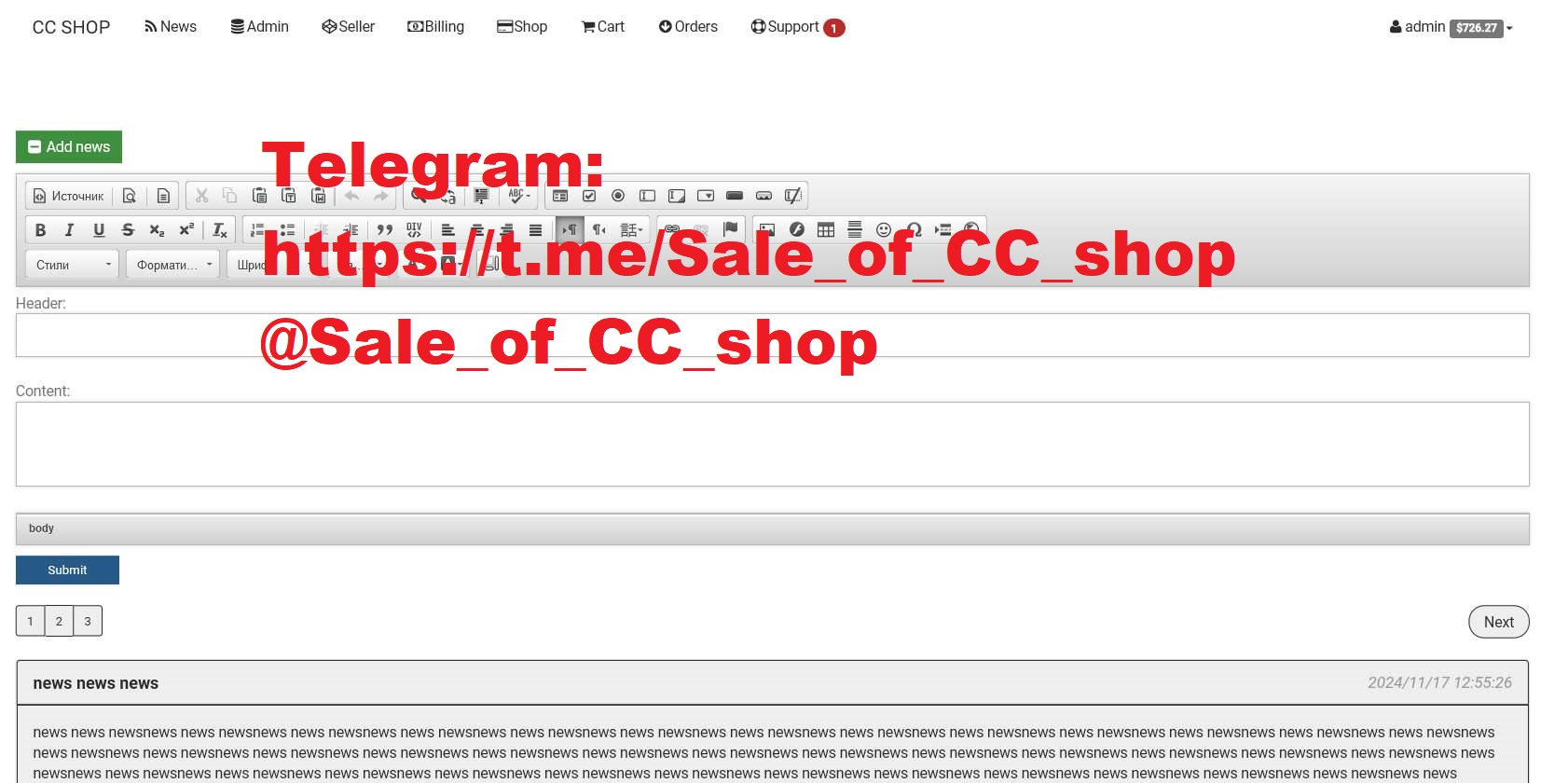
3. Billing
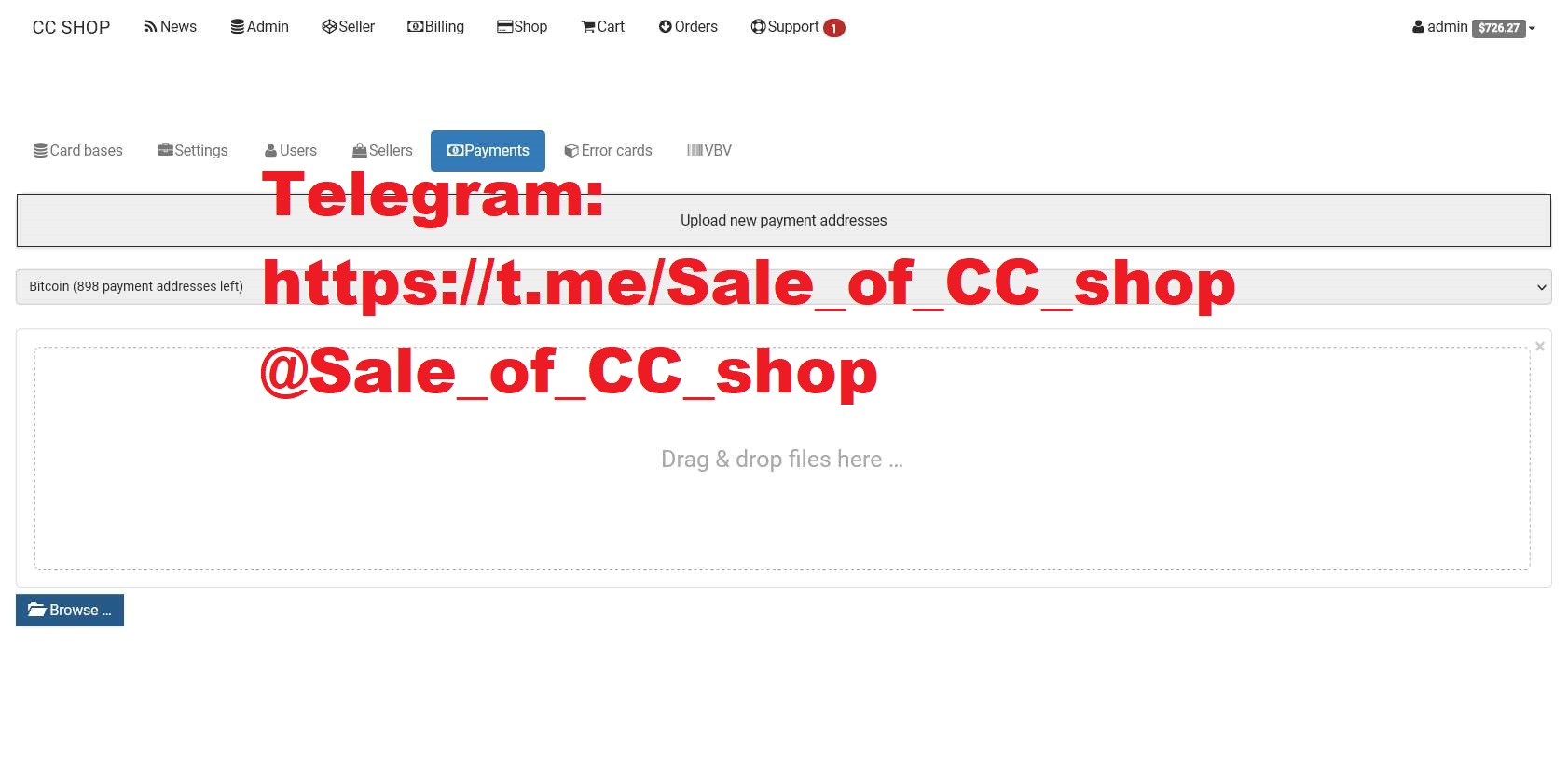
The balance top-up section allows users to deposit funds via cryptocurrency. The system is easily extendable to support other currencies, with Bitcoin and Litecoin currently being supported.
The user selects the desired currency, creates a request, and receives a unique address for the transfer.
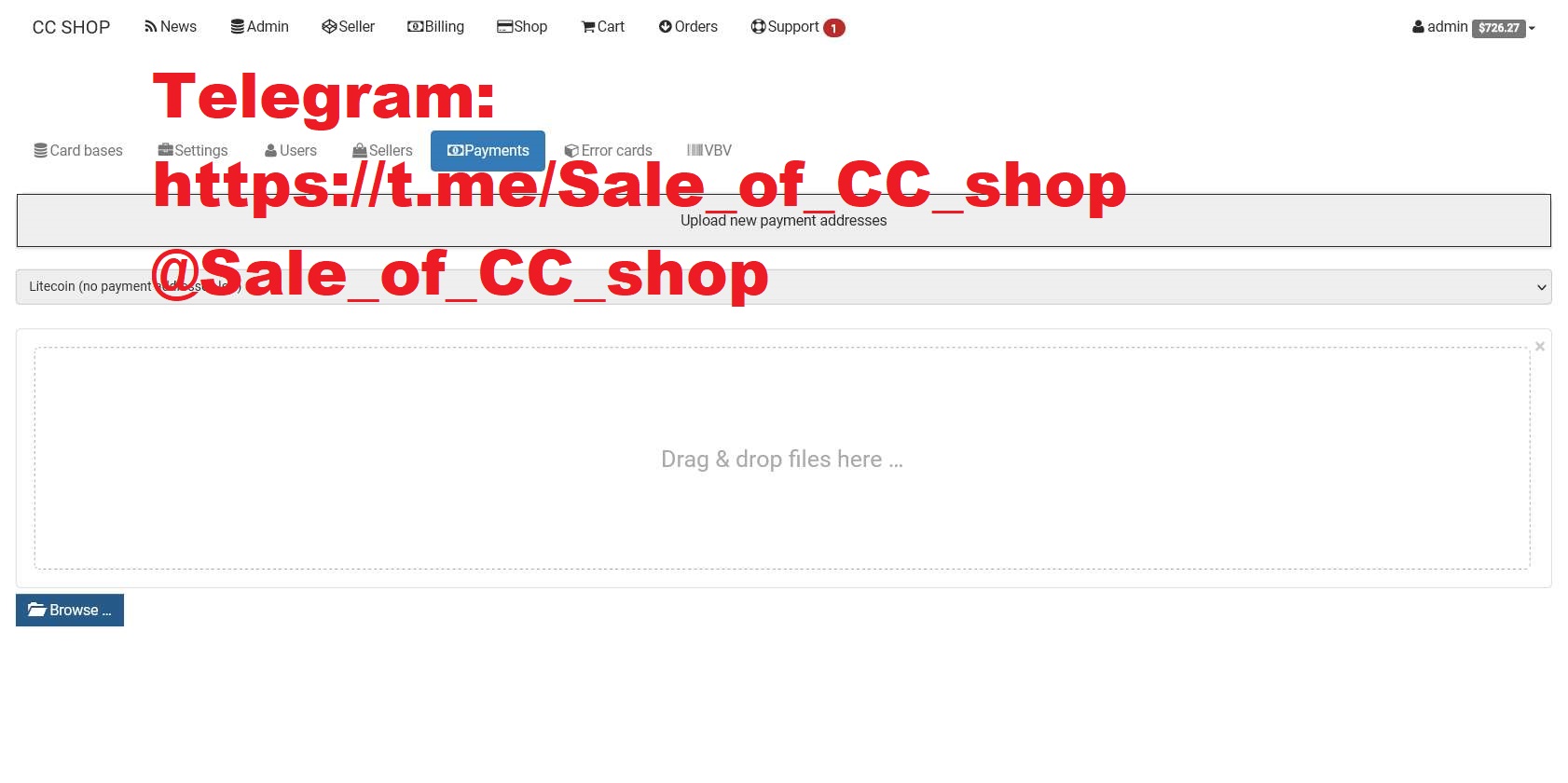
After that, the system checks the transaction in the background, converts it to dollars at the current exchange rate, deducts the fee, and notifies the user of the status.
It is important to note that the payment processes do not rely on third-party services to enhance security, and exchange rates and transaction information are sourced from reliable public sources. The administrator uploads and maintains addresses in CSV format, which simplifies mass data processing.
4. Shopping
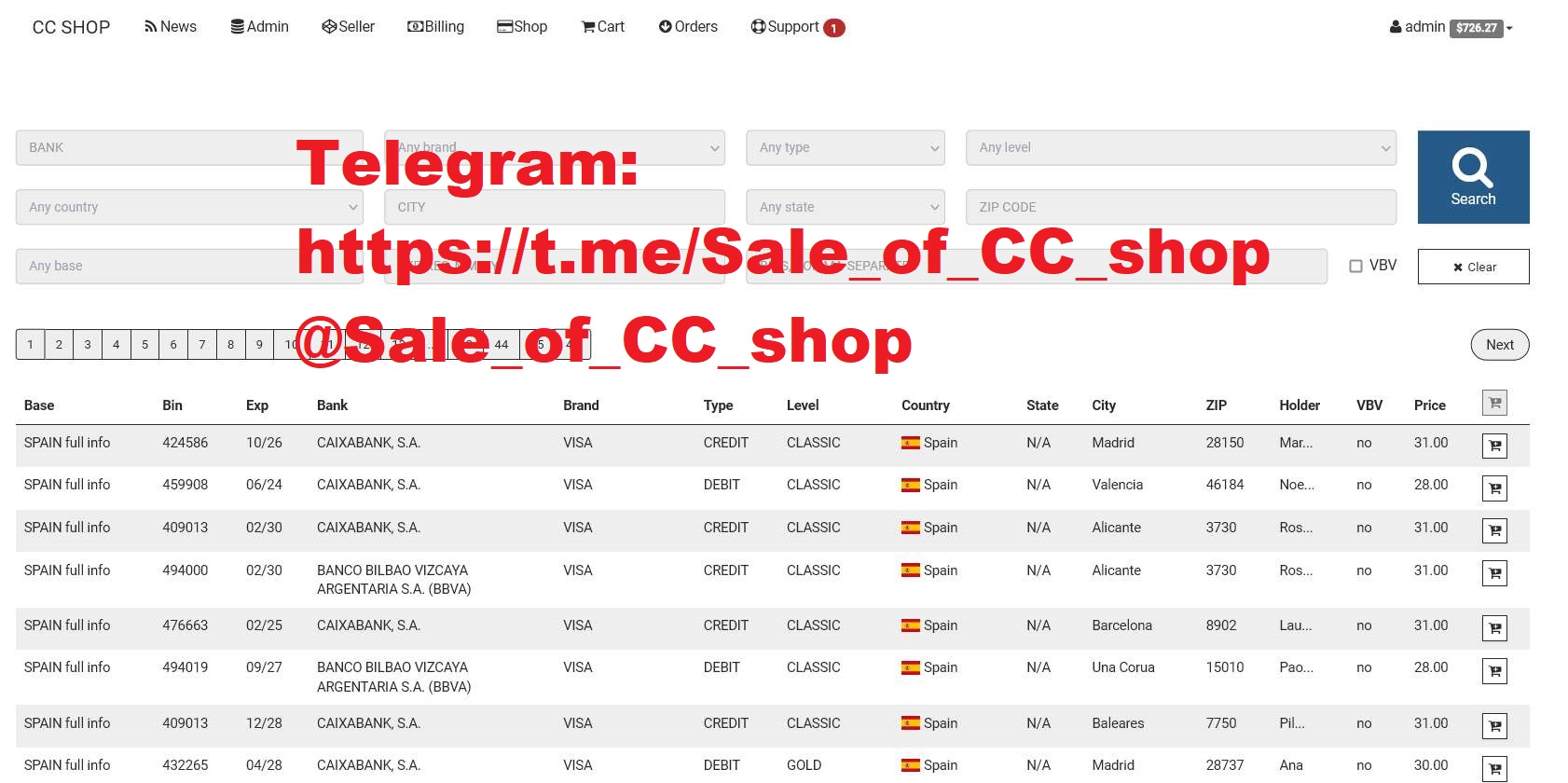
The card catalog contains comprehensive information: origin of the database, BIN, expiration date, bank, country, type, and price. Full access to the data, including CVV, is provided only after purchase.
Users can add cards to the cart and search for them based on multiple parameters, including BIN, expiration date, and other filters.
The administrator can set a fee for using the search feature, as well as an additional commission for filtering by specific criteria. The cost of each card depends on the settings of the database from which it is uploaded, providing flexible pricing.
5. Cart
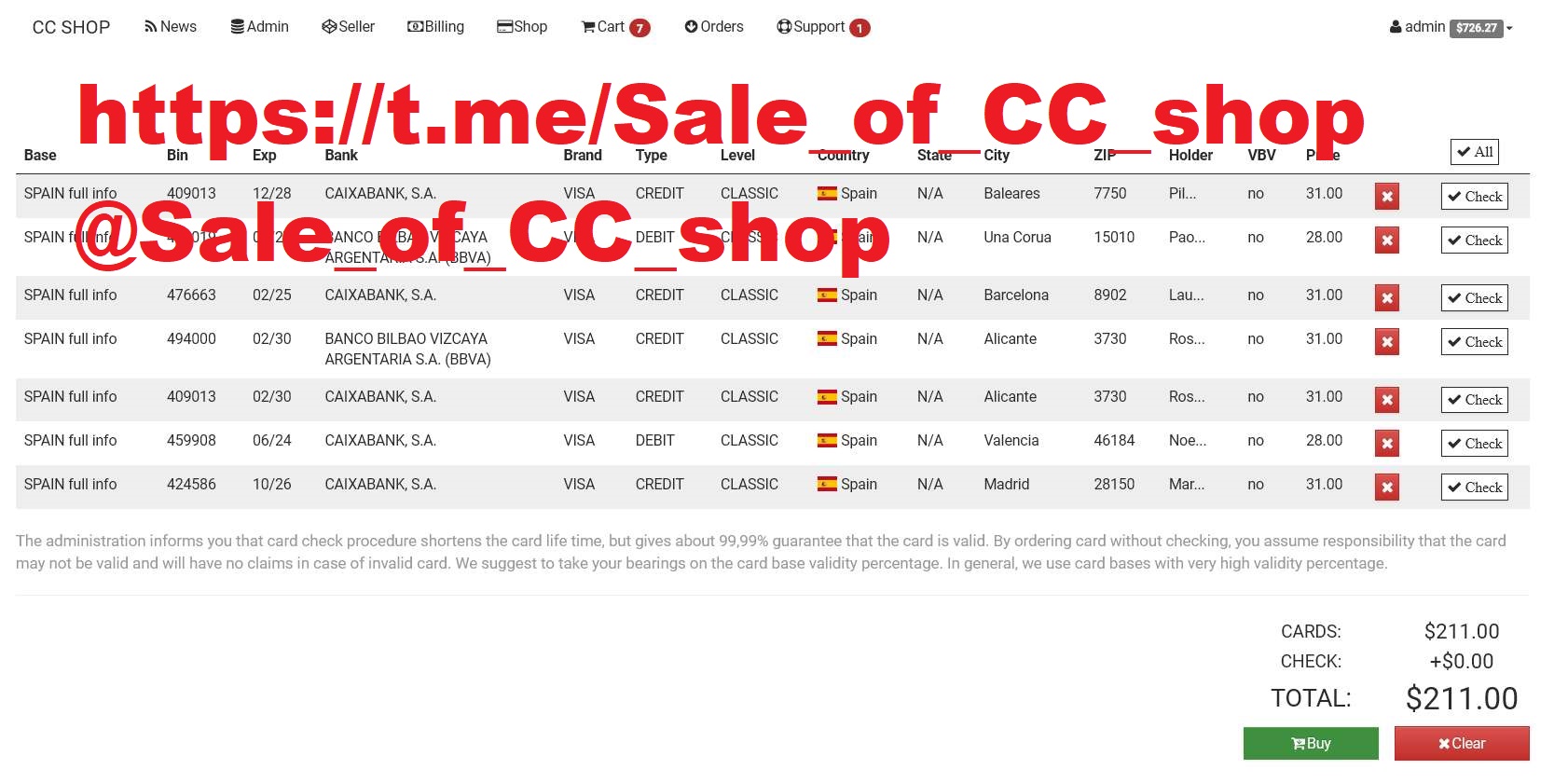
The shopping cart allows users to easily remove unwanted cards, clear the list, or complete the purchase. If necessary, the user can request card verification before payment. The system supports the setup of a verification fee in the admin panel.
The interface clearly displays the total cost of the selected cards, the verification fee, and the final amount to be paid.
The checker is integrated with bincodes.com, but upon request, it is possible to connect another service or develop a custom verification algorithm that meets your requirements.
6. Order History
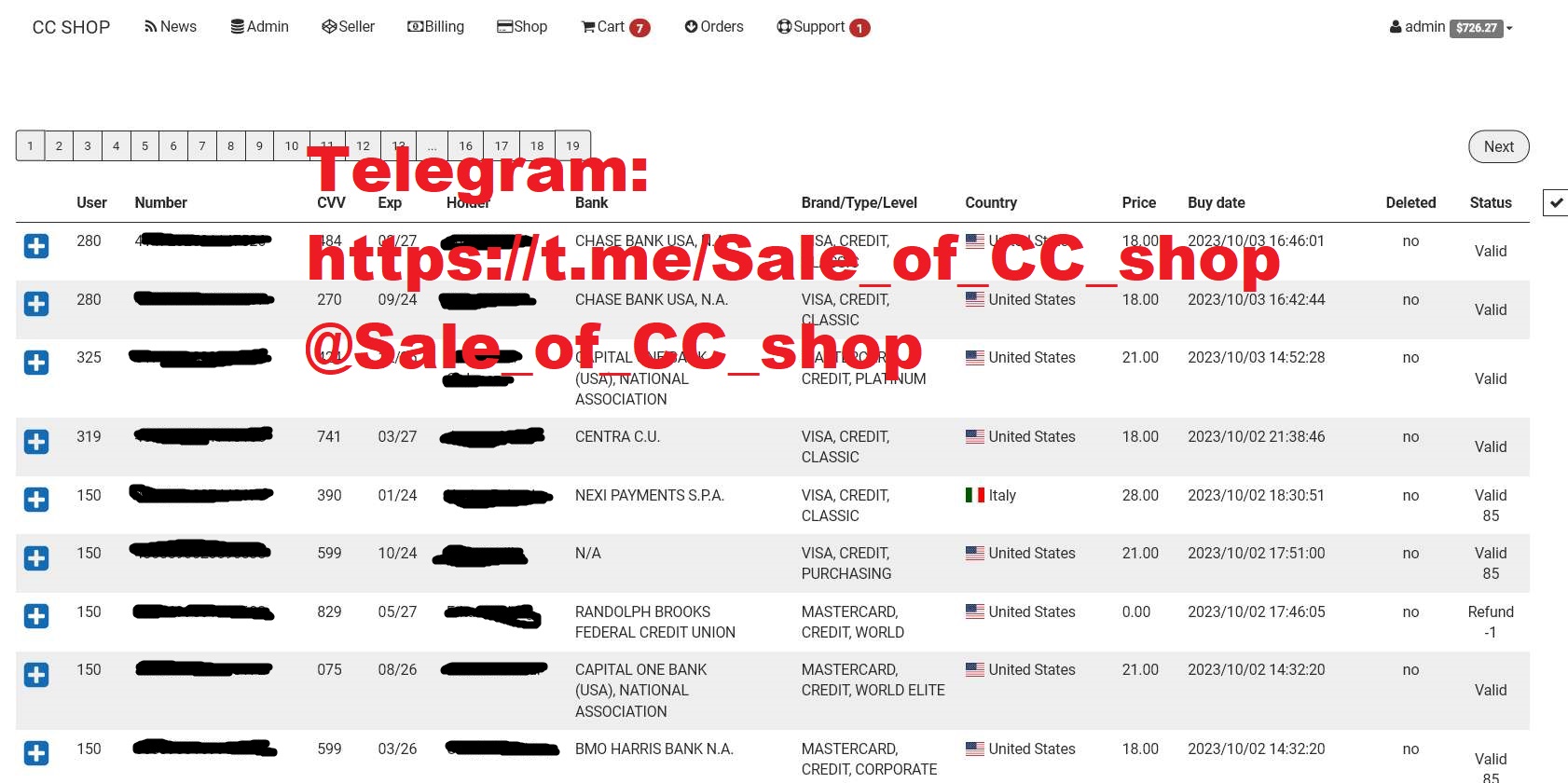
Viewing History After completing a purchase, the user gains access to the "Order History" section. In this section, key fields for each purchased card are displayed. Additionally, each record can be expanded to view all the information available in the database for that card.
Saving and Clearing The user can save the order history in a convenient text format for future use. After saving, there is an option to clear the history.
Card Statuses Each purchased card is assigned one of the following statuses:
Valid: The card has not been verified, or it has passed verification successfully.
Invalid: The checker has determined the card to be invalid. In this case:
The cost of the card is refunded to the user.
The seller’s earned percentage is deducted.
Checker Error: An error occurred during the card verification process.
Checker Timeout: The verification was not completed within the time frame specified in the settings.
Re-checking Cards with a checker error (status 3) or timeout (status 4) can be sent for re-checking without an additional fee. To prevent abuse, the administrator can set a minimum time interval between re-checks for a card.
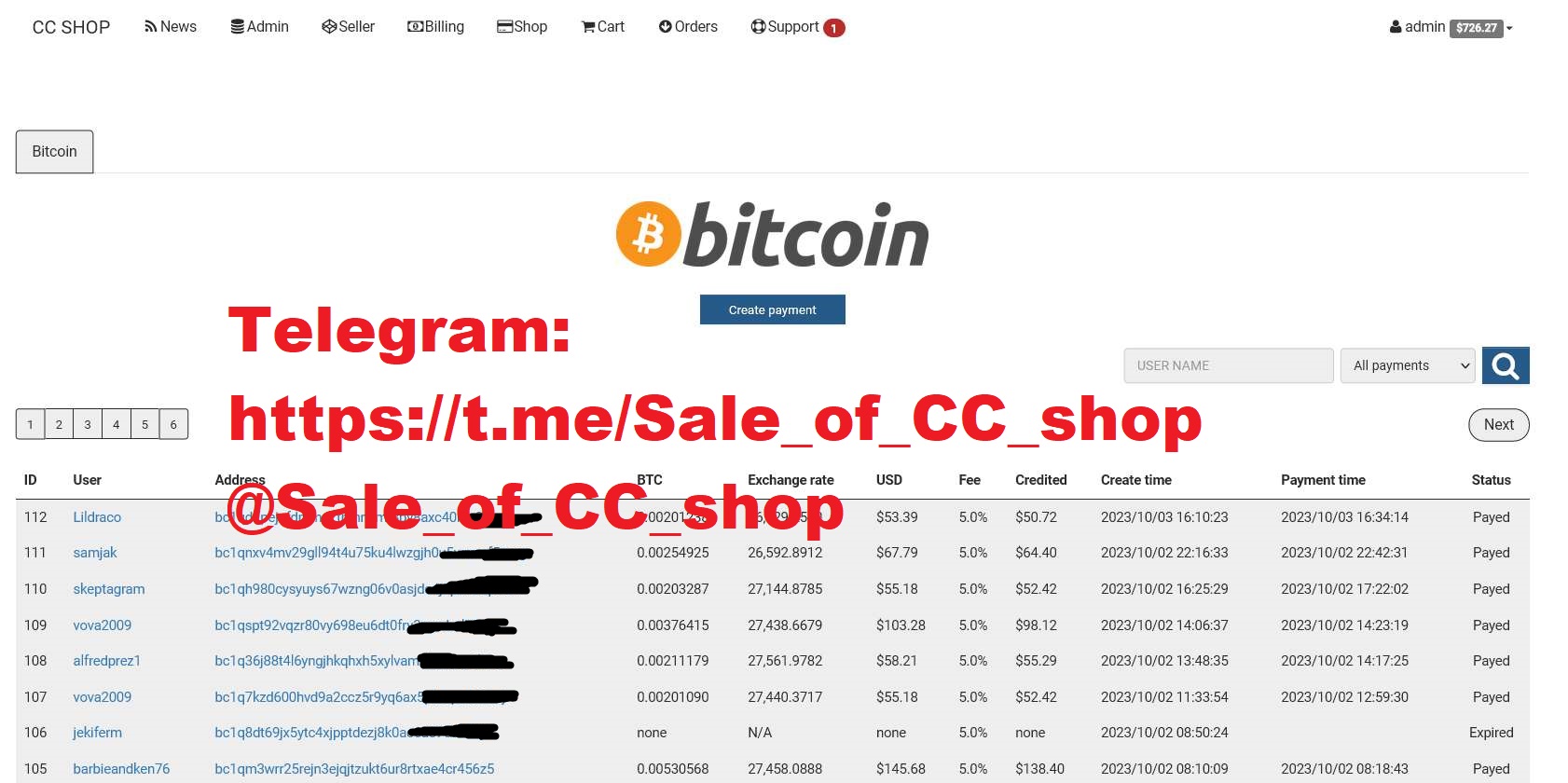
Administrator Interface The administrator has a separate interface where all cards with verification errors are displayed. From this interface, they can:
Direct individual cards or groups of cards for re-checking.
Mark cards as invalid manually.
6. Card Databases
Cards are uploaded in batches (databases). A database is a text file in a flexible format, which is specified when uploading the card database. For example, if the format is defined as:
num|mon|year|cvv|country|fname|lname|addr|city||zip
then the database file could look like this:
4483382594746426|05/27|433|UNITED STATES|RIO|BATTILANA|4632 N 14TH STREET|PHOENIX||85014|6022300027|riolauren09@gmail.com|05/21/1985|||
The card database format can be customized by changing the order of fields (e.g., num, mon, year, and others) and setting any delimiters between them. This allows flexible adaptation of the system to the data structure used in the uploaded file.
For example, if the format is set as:
year,mon,num:cvv|country|fname|lname|addr|city||zip, the file could look like this:
2019,06,4750556086658452:663|UNITED STATES|RIO|BATTILANA|4632 N 14TH STREET|PHOENIX||85014|6022300027|riolauren09@gmail.com|05/21/1985|||
2019,01,4462913451847617:799|UNITED KINGDOM|Mark|Buterworth|7 Beckingham Street|Maldon||CM98LQ|07506664579|butterworthm89@gmail.com|05/02/1989|||
Additionally, all information after the last specified delimiter is automatically converted into "extra data." This data becomes available to the user only after purchasing the card (see the description above).
The shop automatically determines the country, bank, card type, brand, level, and many other parameters based on the specified BIN code.
The process of uploading a card database into the system involves several key steps, each aimed at optimizing and ensuring the accuracy of data processing.
Uploading the database file into the admin panel. At this stage, the card database file is uploaded into the system for further processing and analysis.
Determining the card pricing criteria. It is essential to configure the card pricing algorithm correctly, which is activated immediately after the database is uploaded. This process includes:
Setting a base price for the cards in the uploaded database.
Configuring markup rates, which can depend on a range of conditions. For example, adding $2 for CREDIT cards, $0.5 for VISA branded cards, or $0.3 for cards from the USA.
Activating the database. After activation, cards are automatically assigned a price, and the data about them is stored in the MySQL database. After this, the pricing criteria become static, and they cannot be changed since the price for each card has already been set.
Once activated, the database becomes available for purchase in the relevant section of the shop. There is also an option to deactivate the database. In this case, all unsold cards will be deleted, but the database itself will remain in the system. The database can be reactivated if, for example, there is a need to adjust the pricing parameters.
In the list of databases, you can view detailed statistics for each database:
Upload date.
The number of lines in the uploaded file and the number of successfully parsed lines (i.e., lines that were converted into cards), as well as data on duplicates and errors.
The number of cards sold so far.
Card statistics: how many are valid, how many are invalid, and how many have ended with a checker error.
The total amount from sold cards, as well as detailed earnings information: how much has been earned, how much has been paid to sellers, and how many more cards need to be sold to meet goals.
7. General Settings Section
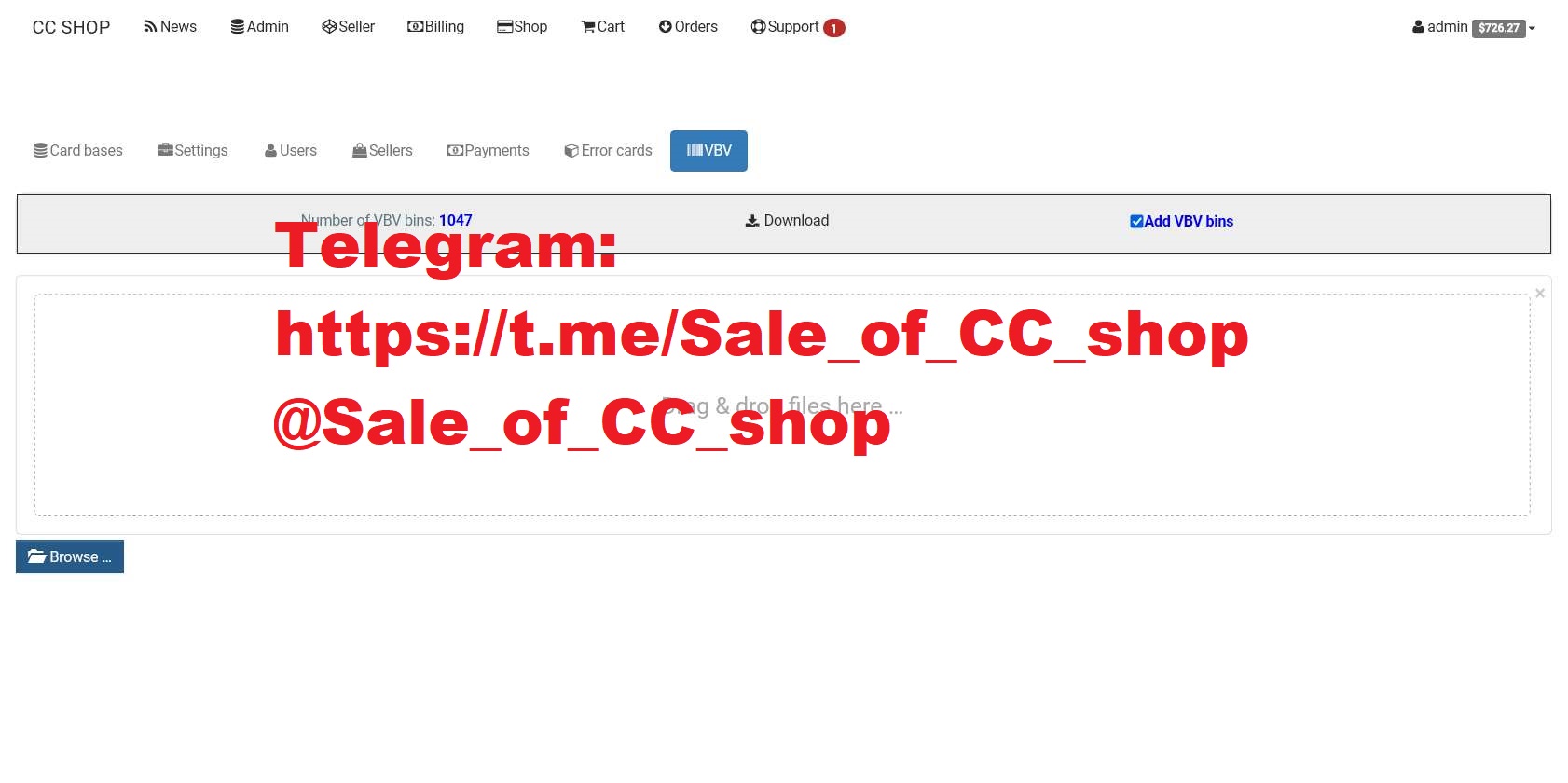
In this section, you can configure commissions and global pricing criteria that apply to all databases and cards in the store. These settings are combined with the parameters set for each specific card database.
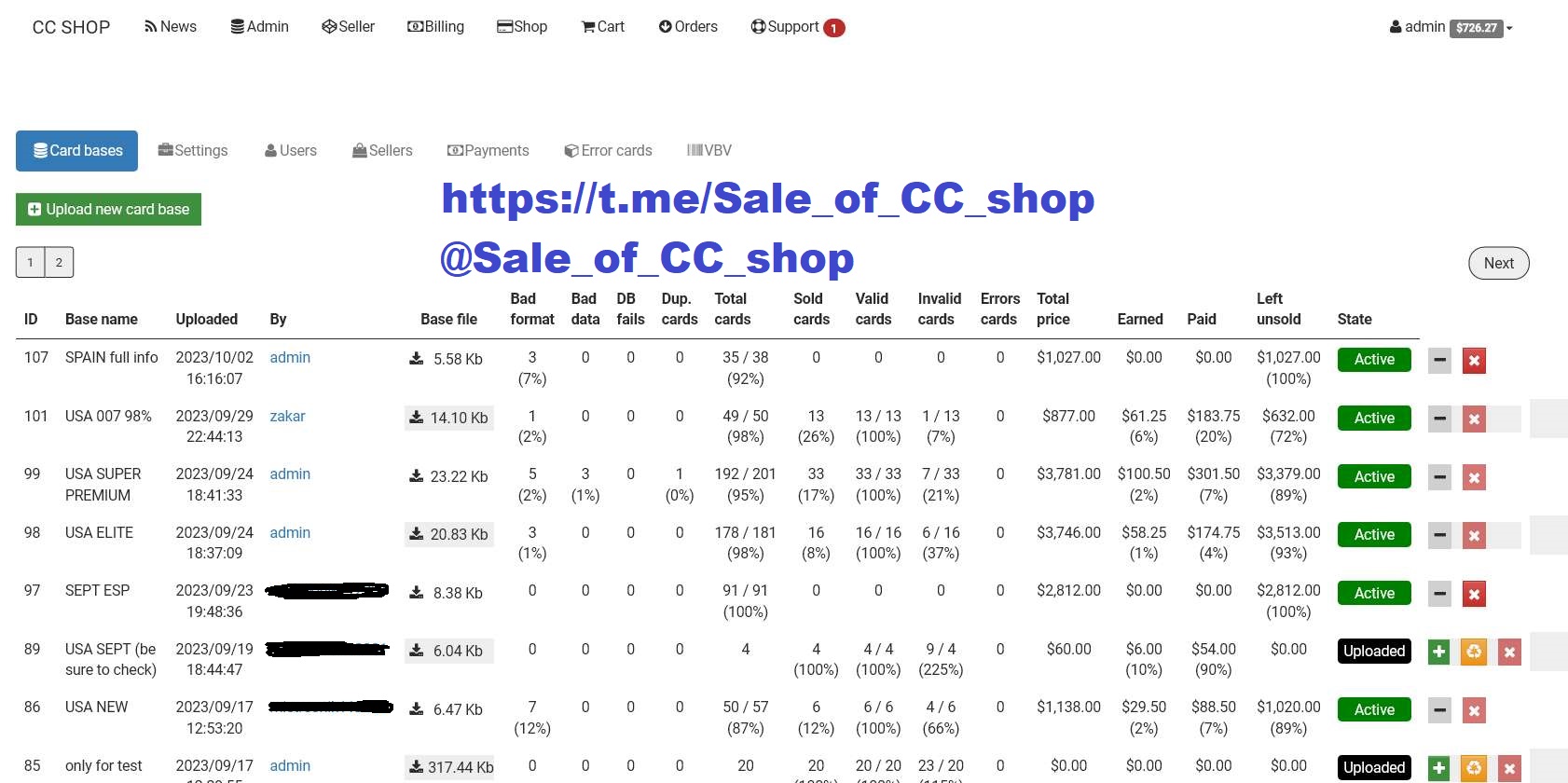
Global Commissions. Here, you can set commissions for various operations, such as card verification. For example, you can configure a commission for verifying a single card, as previously described. These commissions will apply to all cards unless individual conditions are set for them.
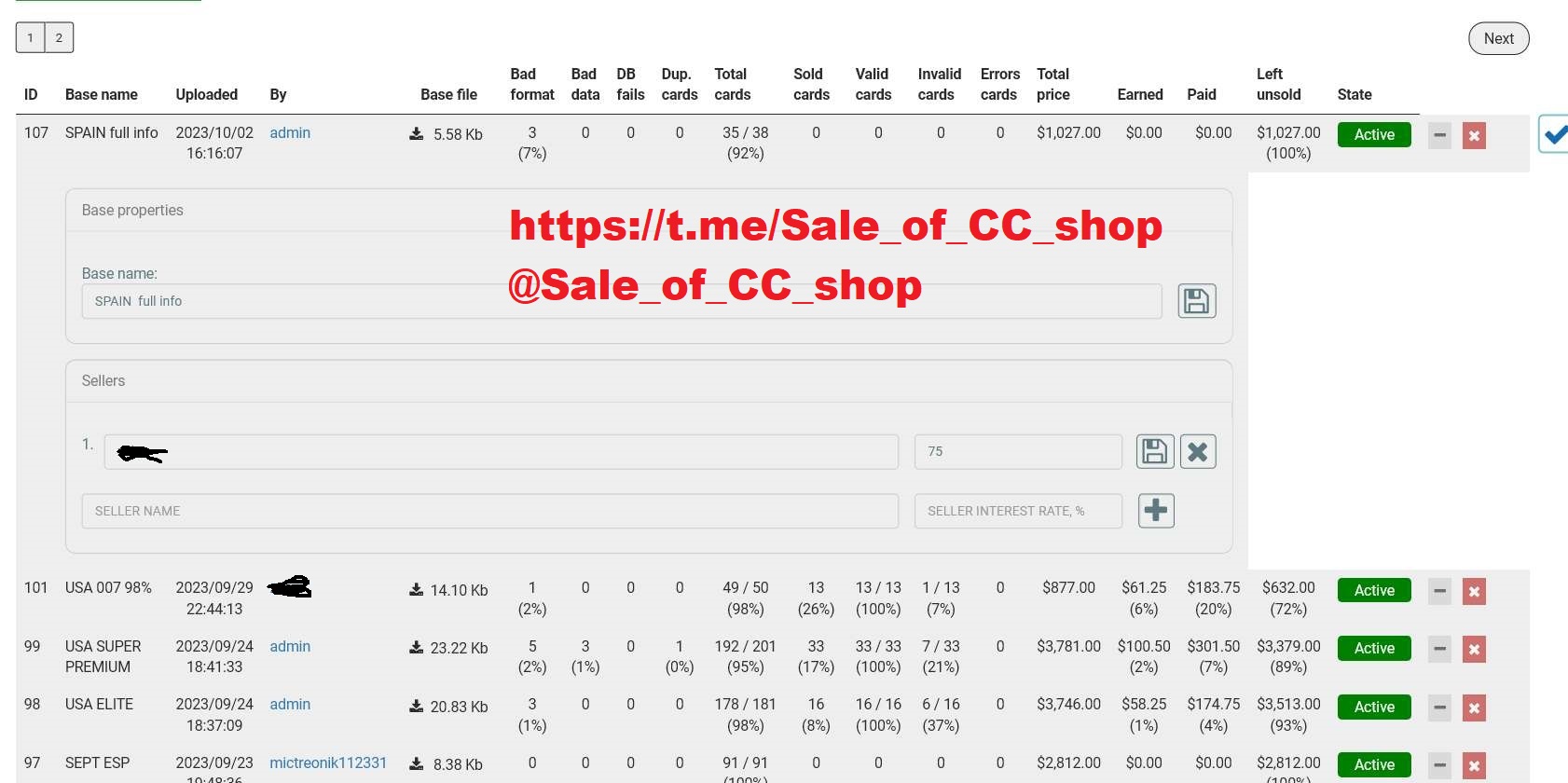
Global Pricing Criteria. This section specifies the basic parameters for calculating card prices, which are also combined with individual settings for each database. This allows you to set general rules for all cards, such as markup based on the card type, country, or brand.
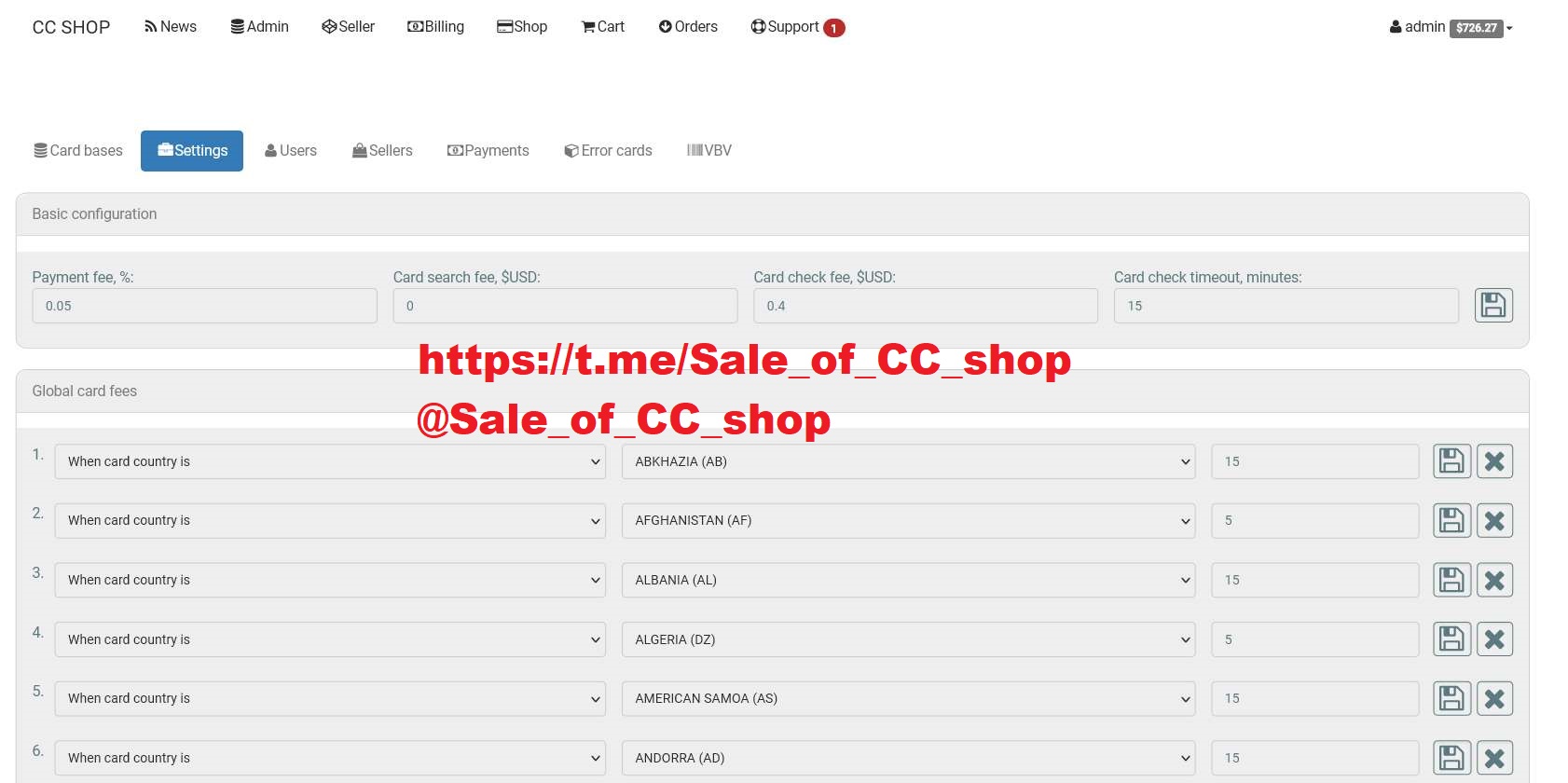
Additional "When searching by" criterion. This parameter allows you to set a commission for searches based on specific fields. If a field is left blank, the commission will apply to all types of searches. For example, you can set a commission for searching cards by a specific BIN, or conversely, exclude it for searches based on this field.
All these parameters help to configure the card management and sales process flexibly based on different conditions, ensuring control over commissions and pricing at all levels.
8. Sellers
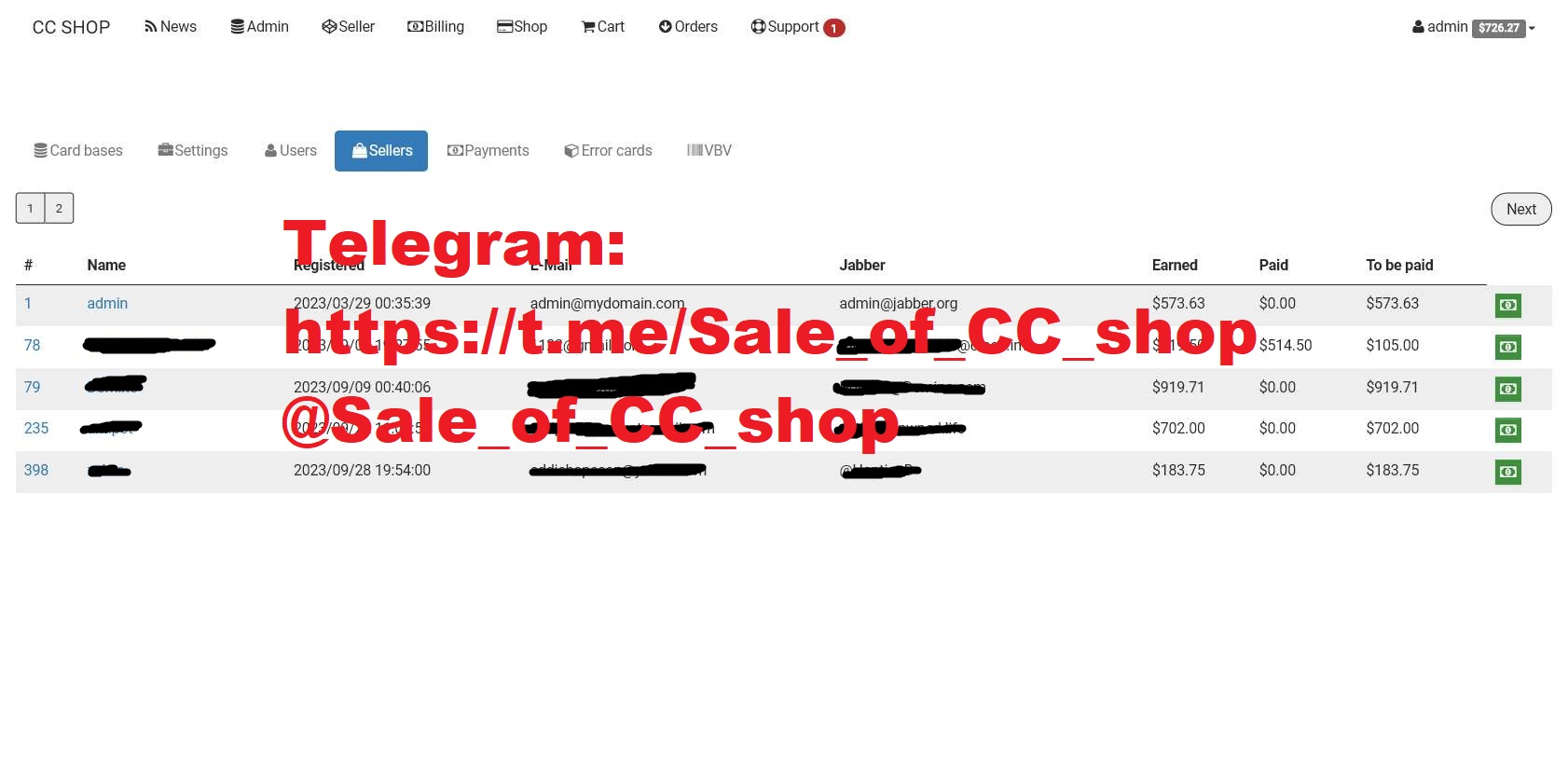
Sales Commission.
When uploading a card database, a commission percentage is set for each seller, which will be their share of the price for each card sold. This percentage is used to calculate the seller's income from the sale of cards from the database.
Seller Administration Section.
In the admin section, information about each seller is displayed, including:

The total amount earned by the seller over the entire period.
The amount that has already been paid.
The amount still to be paid.
The administrator can purchase the seller's balance by transferring the required amount. Afterward, clicking the "Green" button moves the amount from the "To be paid" field to "Paid." The "To be paid" balance is reset, and the "Paid" value increases. Additionally, the seller's balance is reduced by the paid amount.
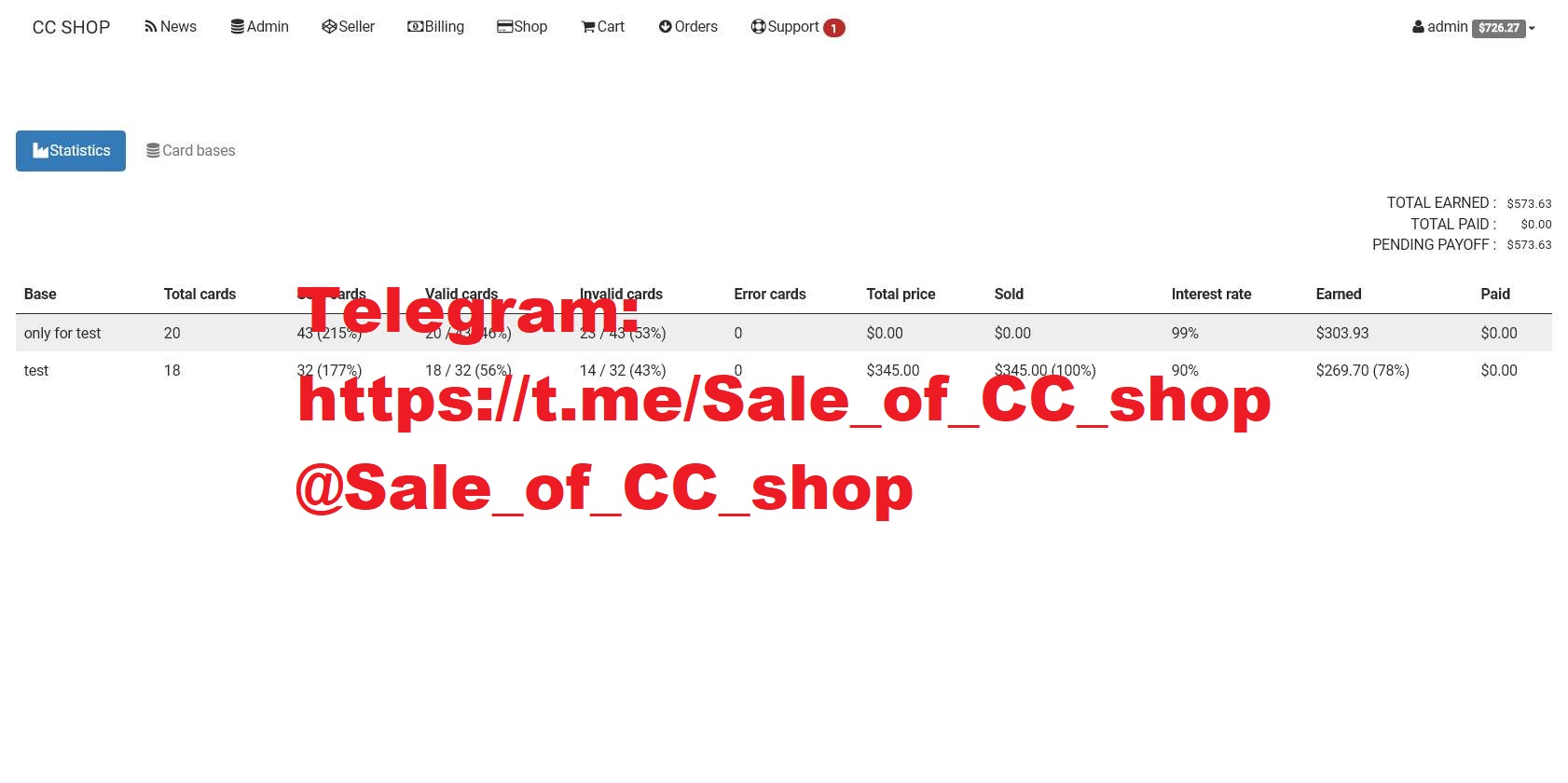
Database Statistics for Each Seller.
Each seller has a section with detailed statistics for their databases, which includes:
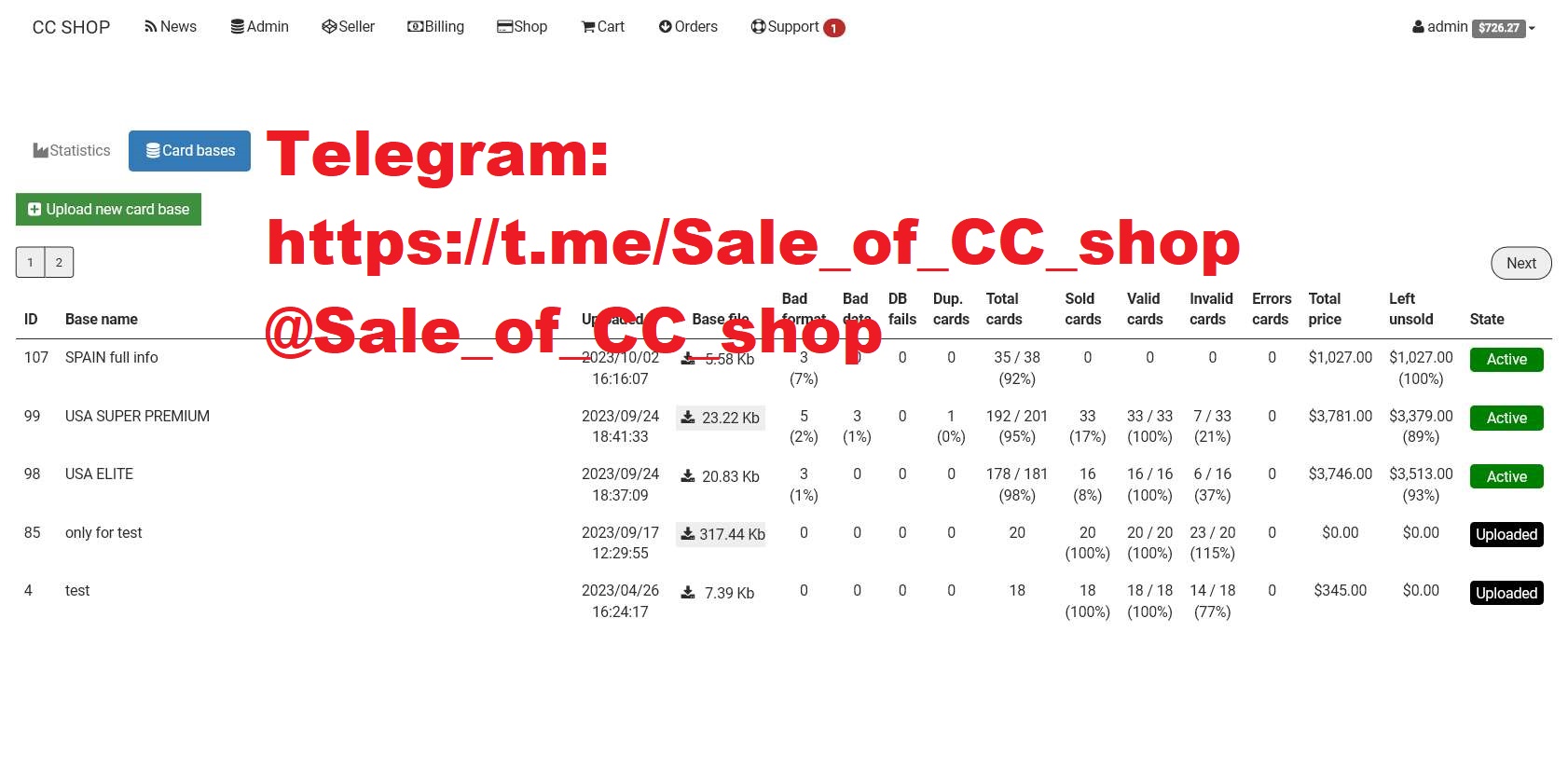
Total number of cards in the database.
Number of cards sold.
Number of valid cards.
Number of invalid cards.
Number of cards with errors.
Total value of cards in the database.
The amount the seller has earned from these cards.
The amount already paid and the amount still to be paid.
Total income of the seller.
The total earnings for the seller across all their databases are also displayed, along with information about how much has been paid to them and how much remains to be paid.
9. Technical Support Section
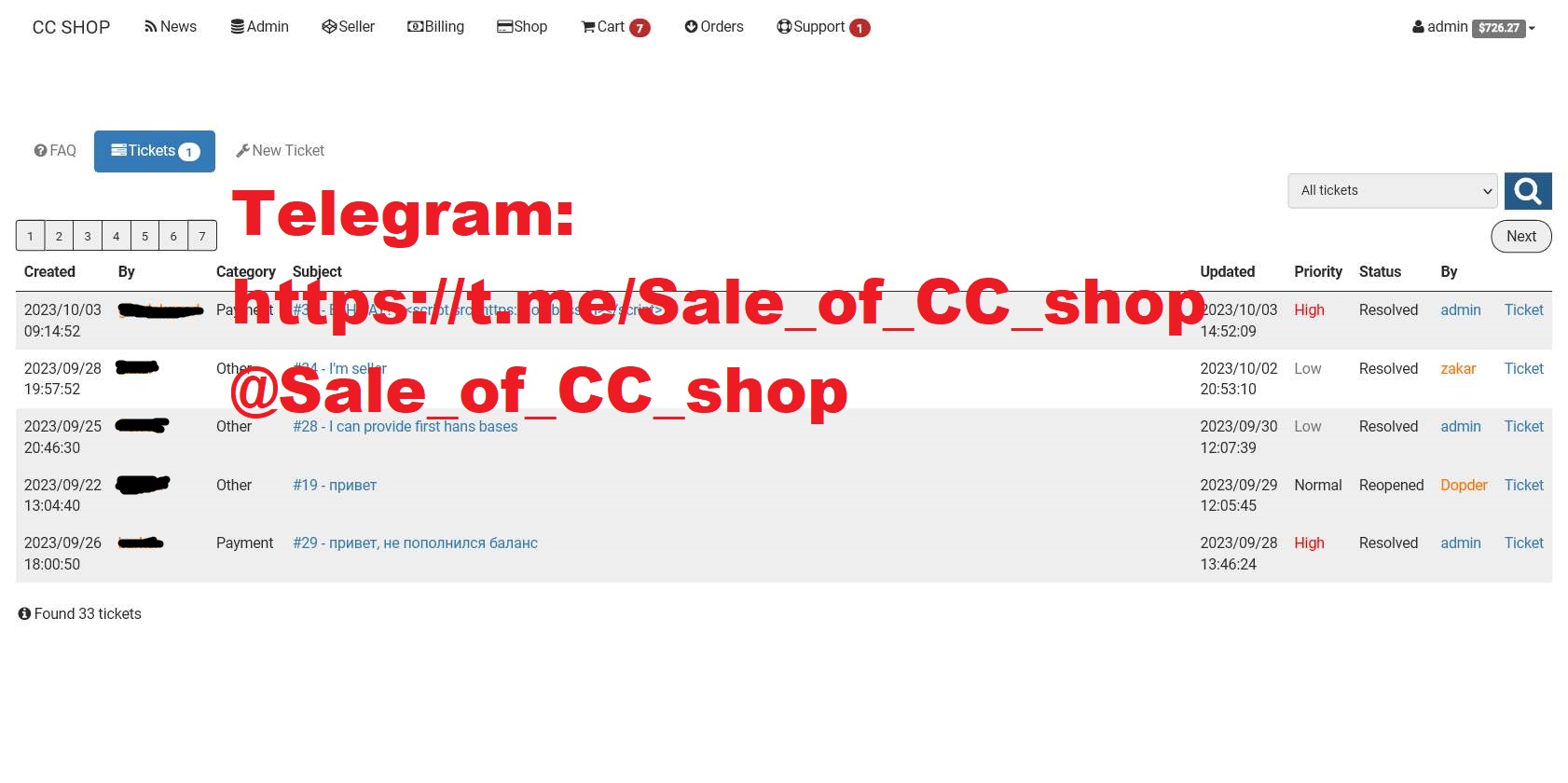
9.1. FAQ Section
Viewing the FAQ
Users can view the list of frequently asked questions (FAQ). Each question is displayed as a heading, and when clicked, the detailed answer expands.
Editing the FAQ by the Administrator
The administrator has the ability to edit the FAQ list directly on the page. This is done using an integrated WYSIWYG editor, which allows for quick text updates and formatting, adding images and links, as well as modifying the questions and answers.

9.2. Ticket List Section
For the User
The user can view a list of their tickets, with each ticket displaying key details such as status, creation date, and the subject of the ticket. The user can open a ticket to see the full details and track the progress of its resolution.
For the Support Staff Role
A user with the Support Staff role can view all tickets submitted by all users. They have the ability to view and manage tickets, respond to them, and resolve any issues. There is also an option to filter tickets based on various parameters (such as status or date).

Ticket Category:
9.3.1. Category:
The user selects the ticket category from the provided list:
1.1 Payment — Issues related to payment.
1.2 Refund — Requests for refunds.
1.3 Other — Other problems or inquiries.
Priority:
The priority of the ticket is indicated:
2.1 Low — Low priority.
2.2 Normal — Standard priority.
2.3 High — High priority.
2.4 Critical — Critical priority, requires immediate attention.
Title:
A brief description of the issue or request is entered to provide an overview of the ticket's content.
4. Ticket Content:
A detailed description of the issue or request is entered, including all necessary details to resolve the situation.
9.4. Viewing/Editing a Ticket:
New comments can be added. Additionally, all actions, such as closing or changing the priority of the ticket, are displayed as records. Records from users with different roles are shown in different colors.
Support Staff can accept (Accept) tickets. The ticket's category and priority can be changed, and it can be closed as Resolved, Wont Fix, or Duplicate Of <...>
10. Product Quality:
The product’s code is at a very high level. The project was initially developed with the assumption that it would be targeted by potential hackers.
Error checking is implemented everywhere possible, with a particular focus on SQL vulnerabilities.
All privileges are checked, not only on the client side but also on the server side. The authentication system is designed in such a way that even if transmitted data (username, password hash) is intercepted, it will be impossible to use them to log in again.
The engine aims to ensure that even the most careless user actions cannot cause the system to enter an incorrect state, such as setting the total commission for all sellers in a database to more than 100%.
The administrator cannot demote themselves.
The engine is very strict when it comes to any operations involving money.
All operations dealing with money or user balances are wrapped in SQL transactions.
This way, there won’t be any unpleasant situations where a user’s funds are deducted, but the cards they ordered don’t appear in the list of their orders.
Alternatively:
The engine is lightweight and runs smoothly. It is designed to handle large volumes of data efficiently. The keys in the tables are properly optimized for the necessary queries.
Large volumes of data are displayed in parts (paginated).
All errors are reported to the user through a clean, user-friendly interface.
By purchasing, you will receive:
The full source code, which I won’t just send to you, but I will also deploy it on your server, with thorough configuration and optimization.
A fully customized checker algorithm, if the standard solution does not meet your requirements.
For two weeks after the transaction, I will provide warranty support. This includes fixing any bugs present at the time of sale, making small adjustments as per your requests (e.g., rearranging the menu, changing style or colors), and handing over the project to your developer if you decide to handle it yourself.
How the transfer works:
You test the functionality of the shop through remote connection via TeamViewer. The demo version will include all account types, loaded databases, cards, payment addresses, and other necessary elements to fully explore and assess the product's capabilities.
I agree to provide a guarantee, but at your expense.
I can upload and activate the shop you purchased.
I can also provide contact information for a developer who will be able to maintain the project for you.
Payment is exclusively in BTC. The project will be transferred into one set of hands – I consider mass sales of the shop unethical. The sale is conducted through an auction principle. The highest bid wins. (Minimum bid – $5.000). Upon the new owner’s request, I can publicly confirm the exclusivity of the deal in this thread.
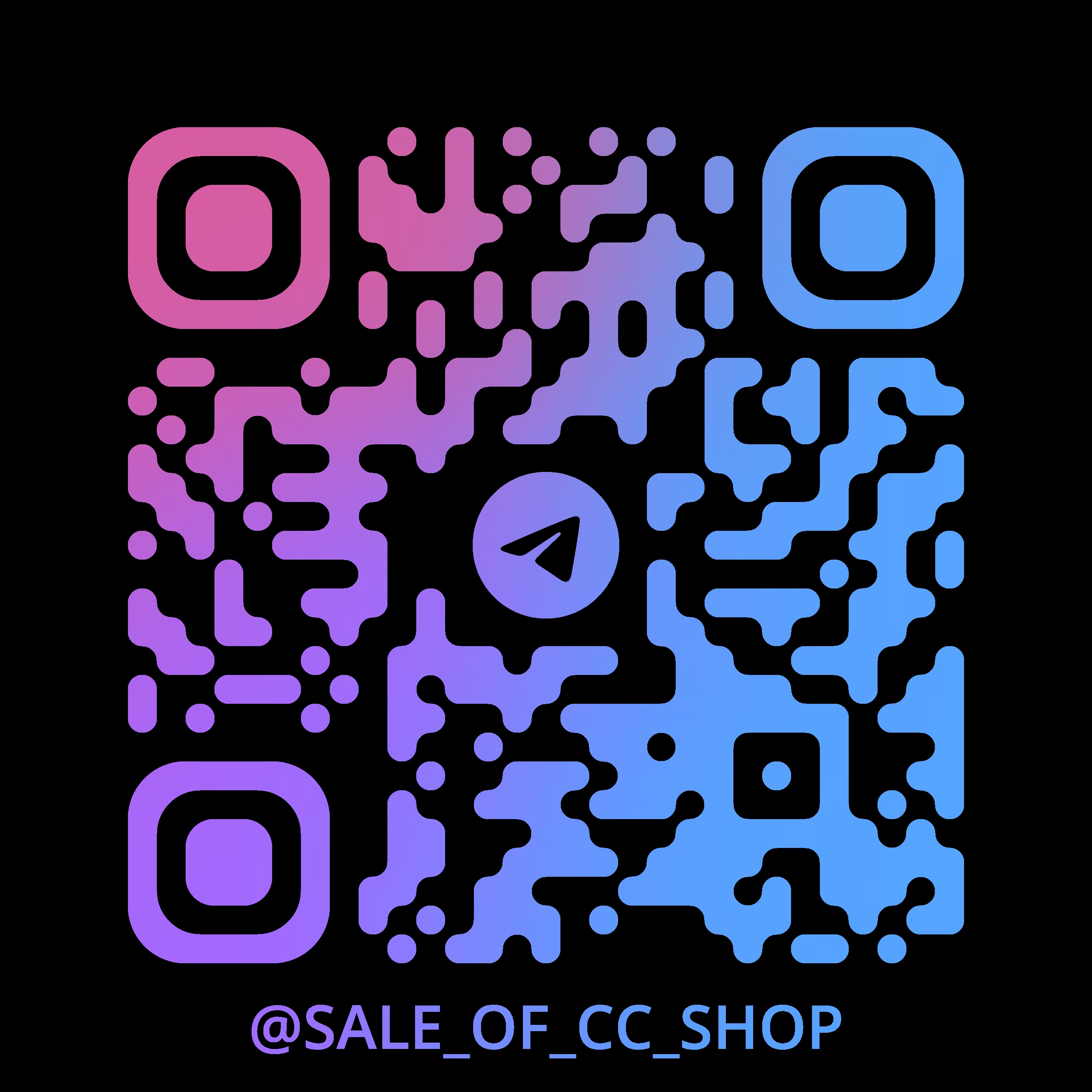
Price: $5.000
Contact: woc2012@1jabber.com
The project was developed with a focus on quality, security against penetration testers, and performance. Below, I will provide a detailed description of the functional blocks, provide screenshots, and outline the terms for verification and sale.
1. Users

The system supports three levels of user roles with different access rights:
Administrator: Full access to all shop functions, including user management, data uploading, and settings configuration.
Seller: Provides card databases for upload by the administrator and receives a set percentage from the sales of each database. Percentages are customizable. Payouts are controlled by the administrator.

Support Staff: Access to tickets, their editing, and responses to resolve user inquiries.
The functionality allows administrators to manually manage accounts: add new users, modify their data, or delete them if necessary.


2. News

The news section is the central hub for informing users after they log in. Here, the latest updates are displayed with the ability to scroll through previous posts. News can include, for example, messages about uploaded databases or changes to functionality. The administrator can easily edit them inline using a flexible WYSIWYG editor with HTML support.

3. Billing

The balance top-up section allows users to deposit funds via cryptocurrency. The system is easily extendable to support other currencies, with Bitcoin and Litecoin currently being supported.
The user selects the desired currency, creates a request, and receives a unique address for the transfer.

After that, the system checks the transaction in the background, converts it to dollars at the current exchange rate, deducts the fee, and notifies the user of the status.
It is important to note that the payment processes do not rely on third-party services to enhance security, and exchange rates and transaction information are sourced from reliable public sources. The administrator uploads and maintains addresses in CSV format, which simplifies mass data processing.
4. Shopping

The card catalog contains comprehensive information: origin of the database, BIN, expiration date, bank, country, type, and price. Full access to the data, including CVV, is provided only after purchase.
Users can add cards to the cart and search for them based on multiple parameters, including BIN, expiration date, and other filters.
The administrator can set a fee for using the search feature, as well as an additional commission for filtering by specific criteria. The cost of each card depends on the settings of the database from which it is uploaded, providing flexible pricing.
5. Cart

The shopping cart allows users to easily remove unwanted cards, clear the list, or complete the purchase. If necessary, the user can request card verification before payment. The system supports the setup of a verification fee in the admin panel.
The interface clearly displays the total cost of the selected cards, the verification fee, and the final amount to be paid.
The checker is integrated with bincodes.com, but upon request, it is possible to connect another service or develop a custom verification algorithm that meets your requirements.
6. Order History

Viewing History After completing a purchase, the user gains access to the "Order History" section. In this section, key fields for each purchased card are displayed. Additionally, each record can be expanded to view all the information available in the database for that card.
Saving and Clearing The user can save the order history in a convenient text format for future use. After saving, there is an option to clear the history.
Card Statuses Each purchased card is assigned one of the following statuses:
Valid: The card has not been verified, or it has passed verification successfully.
Invalid: The checker has determined the card to be invalid. In this case:
The cost of the card is refunded to the user.
The seller’s earned percentage is deducted.
Checker Error: An error occurred during the card verification process.
Checker Timeout: The verification was not completed within the time frame specified in the settings.
Re-checking Cards with a checker error (status 3) or timeout (status 4) can be sent for re-checking without an additional fee. To prevent abuse, the administrator can set a minimum time interval between re-checks for a card.

Administrator Interface The administrator has a separate interface where all cards with verification errors are displayed. From this interface, they can:
Direct individual cards or groups of cards for re-checking.
Mark cards as invalid manually.
6. Card Databases
Cards are uploaded in batches (databases). A database is a text file in a flexible format, which is specified when uploading the card database. For example, if the format is defined as:
num|mon|year|cvv|country|fname|lname|addr|city||zip
then the database file could look like this:
4483382594746426|05/27|433|UNITED STATES|RIO|BATTILANA|4632 N 14TH STREET|PHOENIX||85014|6022300027|riolauren09@gmail.com|05/21/1985|||
The card database format can be customized by changing the order of fields (e.g., num, mon, year, and others) and setting any delimiters between them. This allows flexible adaptation of the system to the data structure used in the uploaded file.
For example, if the format is set as:
year,mon,num:cvv|country|fname|lname|addr|city||zip, the file could look like this:
2019,06,4750556086658452:663|UNITED STATES|RIO|BATTILANA|4632 N 14TH STREET|PHOENIX||85014|6022300027|riolauren09@gmail.com|05/21/1985|||
2019,01,4462913451847617:799|UNITED KINGDOM|Mark|Buterworth|7 Beckingham Street|Maldon||CM98LQ|07506664579|butterworthm89@gmail.com|05/02/1989|||
Additionally, all information after the last specified delimiter is automatically converted into "extra data." This data becomes available to the user only after purchasing the card (see the description above).
The shop automatically determines the country, bank, card type, brand, level, and many other parameters based on the specified BIN code.
The process of uploading a card database into the system involves several key steps, each aimed at optimizing and ensuring the accuracy of data processing.
Uploading the database file into the admin panel. At this stage, the card database file is uploaded into the system for further processing and analysis.
Determining the card pricing criteria. It is essential to configure the card pricing algorithm correctly, which is activated immediately after the database is uploaded. This process includes:
Setting a base price for the cards in the uploaded database.
Configuring markup rates, which can depend on a range of conditions. For example, adding $2 for CREDIT cards, $0.5 for VISA branded cards, or $0.3 for cards from the USA.
Activating the database. After activation, cards are automatically assigned a price, and the data about them is stored in the MySQL database. After this, the pricing criteria become static, and they cannot be changed since the price for each card has already been set.
Once activated, the database becomes available for purchase in the relevant section of the shop. There is also an option to deactivate the database. In this case, all unsold cards will be deleted, but the database itself will remain in the system. The database can be reactivated if, for example, there is a need to adjust the pricing parameters.
In the list of databases, you can view detailed statistics for each database:
Upload date.
The number of lines in the uploaded file and the number of successfully parsed lines (i.e., lines that were converted into cards), as well as data on duplicates and errors.
The number of cards sold so far.
Card statistics: how many are valid, how many are invalid, and how many have ended with a checker error.
The total amount from sold cards, as well as detailed earnings information: how much has been earned, how much has been paid to sellers, and how many more cards need to be sold to meet goals.
7. General Settings Section

In this section, you can configure commissions and global pricing criteria that apply to all databases and cards in the store. These settings are combined with the parameters set for each specific card database.

Global Commissions. Here, you can set commissions for various operations, such as card verification. For example, you can configure a commission for verifying a single card, as previously described. These commissions will apply to all cards unless individual conditions are set for them.

Global Pricing Criteria. This section specifies the basic parameters for calculating card prices, which are also combined with individual settings for each database. This allows you to set general rules for all cards, such as markup based on the card type, country, or brand.

Additional "When searching by" criterion. This parameter allows you to set a commission for searches based on specific fields. If a field is left blank, the commission will apply to all types of searches. For example, you can set a commission for searching cards by a specific BIN, or conversely, exclude it for searches based on this field.
All these parameters help to configure the card management and sales process flexibly based on different conditions, ensuring control over commissions and pricing at all levels.
8. Sellers

Sales Commission.
When uploading a card database, a commission percentage is set for each seller, which will be their share of the price for each card sold. This percentage is used to calculate the seller's income from the sale of cards from the database.
Seller Administration Section.
In the admin section, information about each seller is displayed, including:

The total amount earned by the seller over the entire period.
The amount that has already been paid.
The amount still to be paid.
The administrator can purchase the seller's balance by transferring the required amount. Afterward, clicking the "Green" button moves the amount from the "To be paid" field to "Paid." The "To be paid" balance is reset, and the "Paid" value increases. Additionally, the seller's balance is reduced by the paid amount.

Database Statistics for Each Seller.
Each seller has a section with detailed statistics for their databases, which includes:

Total number of cards in the database.
Number of cards sold.
Number of valid cards.
Number of invalid cards.
Number of cards with errors.
Total value of cards in the database.
The amount the seller has earned from these cards.
The amount already paid and the amount still to be paid.
Total income of the seller.
The total earnings for the seller across all their databases are also displayed, along with information about how much has been paid to them and how much remains to be paid.
9. Technical Support Section

9.1. FAQ Section
Viewing the FAQ
Users can view the list of frequently asked questions (FAQ). Each question is displayed as a heading, and when clicked, the detailed answer expands.
Editing the FAQ by the Administrator
The administrator has the ability to edit the FAQ list directly on the page. This is done using an integrated WYSIWYG editor, which allows for quick text updates and formatting, adding images and links, as well as modifying the questions and answers.

9.2. Ticket List Section
For the User
The user can view a list of their tickets, with each ticket displaying key details such as status, creation date, and the subject of the ticket. The user can open a ticket to see the full details and track the progress of its resolution.
For the Support Staff Role
A user with the Support Staff role can view all tickets submitted by all users. They have the ability to view and manage tickets, respond to them, and resolve any issues. There is also an option to filter tickets based on various parameters (such as status or date).

Ticket Category:
9.3.1. Category:
The user selects the ticket category from the provided list:
1.1 Payment — Issues related to payment.
1.2 Refund — Requests for refunds.
1.3 Other — Other problems or inquiries.
Priority:
The priority of the ticket is indicated:
2.1 Low — Low priority.
2.2 Normal — Standard priority.
2.3 High — High priority.
2.4 Critical — Critical priority, requires immediate attention.
Title:
A brief description of the issue or request is entered to provide an overview of the ticket's content.
4. Ticket Content:
A detailed description of the issue or request is entered, including all necessary details to resolve the situation.
9.4. Viewing/Editing a Ticket:
New comments can be added. Additionally, all actions, such as closing or changing the priority of the ticket, are displayed as records. Records from users with different roles are shown in different colors.
Support Staff can accept (Accept) tickets. The ticket's category and priority can be changed, and it can be closed as Resolved, Wont Fix, or Duplicate Of <...>
10. Product Quality:
The product’s code is at a very high level. The project was initially developed with the assumption that it would be targeted by potential hackers.
Error checking is implemented everywhere possible, with a particular focus on SQL vulnerabilities.
All privileges are checked, not only on the client side but also on the server side. The authentication system is designed in such a way that even if transmitted data (username, password hash) is intercepted, it will be impossible to use them to log in again.
The engine aims to ensure that even the most careless user actions cannot cause the system to enter an incorrect state, such as setting the total commission for all sellers in a database to more than 100%.
The administrator cannot demote themselves.
The engine is very strict when it comes to any operations involving money.
All operations dealing with money or user balances are wrapped in SQL transactions.
This way, there won’t be any unpleasant situations where a user’s funds are deducted, but the cards they ordered don’t appear in the list of their orders.
Alternatively:
The engine is lightweight and runs smoothly. It is designed to handle large volumes of data efficiently. The keys in the tables are properly optimized for the necessary queries.
Large volumes of data are displayed in parts (paginated).
All errors are reported to the user through a clean, user-friendly interface.
By purchasing, you will receive:
The full source code, which I won’t just send to you, but I will also deploy it on your server, with thorough configuration and optimization.
A fully customized checker algorithm, if the standard solution does not meet your requirements.
For two weeks after the transaction, I will provide warranty support. This includes fixing any bugs present at the time of sale, making small adjustments as per your requests (e.g., rearranging the menu, changing style or colors), and handing over the project to your developer if you decide to handle it yourself.
How the transfer works:
You test the functionality of the shop through remote connection via TeamViewer. The demo version will include all account types, loaded databases, cards, payment addresses, and other necessary elements to fully explore and assess the product's capabilities.
I agree to provide a guarantee, but at your expense.
I can upload and activate the shop you purchased.
I can also provide contact information for a developer who will be able to maintain the project for you.
Payment is exclusively in BTC. The project will be transferred into one set of hands – I consider mass sales of the shop unethical. The sale is conducted through an auction principle. The highest bid wins. (Minimum bid – $5.000). Upon the new owner’s request, I can publicly confirm the exclusivity of the deal in this thread.

Price: $5.000
Contact: woc2012@1jabber.com
Last edited:
